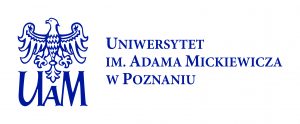Pieńkowska J. R., Proćków M., Sosnowska K., Manganelli G., Giusti F., Lesicki A., New molecular data on the snails of the genus Monacha Fitzinger, 1833 (Gastropoda: Eupulmonata: Hygromiidae) and some other hygromiid species occurring in the spanish provinces of Asturias, Cantabria, Vizcaya and Álava, 227-28null.
Autor: ibedyr
Knopik-Skrocka A. B., Cieszyńska A. H., Przewodnik dla studentów Wydziału Biologii, 1-33null.
Urbański M., Yiğit B. M., Ekner-Grzyb A. E., Chmielowska-Bąk J. 2025. Physiological and oxidative status of soybean seedlings exposed to short term treatment with polystyrene nanoparticles. Ecotoxicology. 34 doi:10.1007/s10646-024-02833-0
Szlaużys M., Ostrowski K. M., Nowak D. A., Prukała W., Starzyk J., Jasiewicz B., Mrówczyńska L. 2025. Hybrid uracil derivatives with caffeine and gramine obtained via click chemistry as potential antioxidants and inhibitors of plant pathogens. Molecules. 30(13): 1-18. doi:10.3390/molecules30132714
Stefanowska K., Woźniak M., Dobrucka R., Sip A., Mrówczyńska L., Waśkiewicz A., Ratajczak I. 2025. Fruit vinegars as natural and bioactive chitosan solvents in the production of chitosan-based films. Polymers. 17(1): 1-15. doi:10.3390/polym17010011
Staśkielunas M., Jasiewicz B., Babijczuk K. M., Prukała W., Sosnowska-Kałasz K., Mrówczyńska L., 2025. Hybrydy indolowo-stilbenowe – innowacyjne związki o aktywności antyoksydacyjnej, V Sympozjum Chemii Bioorganicznej, Organicznej i Biomateriałów. Materiały konferencyjne, 271-73.
Ryszczyńska S., Soler Carracedo K., Ekner-Grzyb A. E., Jurga N., Ćwierzona M., Piątkowski D., Grzyb T. 2025. New horizons for temperature sensing and bioimaging using Er3+ ‐doped core@shell nanoparticles and effects of H2O and D2O solvents on their spectroscopic properties. Advanced Optical Materials. 13(2): 1-12. doi:10.1002/adom.202402053
Przybylska D., Soler Carracedo K., Ekner-Grzyb A. E., Jurga N., Hosseinifard M. 2025. Long‐term study of optical nanoparticles doped with Yb3+/Er3+ and transition metal ions and their real application for imaging and temperature sensing on Triticum Aestivum L. Advanced Optical Materials. 13(18): 1-13. doi:10.1002/adom.202500432
Pieńkowska J. R., Proćków M., Sosnowska K., Manganelli G., Giusti F., Lesicki A. 2025. New molecular data on the snails of the genus Monacha Fitzinger, 1833 (Gastropoda: Eupulmonata: Hygromiidae) and some other hygromiid species occurring in the spanish provinces of Asturias, Cantabria, Vizcaya and Álava. Folia Malacologica. 33(3): 227-28.
Manganelli G., Pieńkowska J. R., Barbato D., Benocci A., Sosnowska K., Anderson R., Giusti F., Lesicki A. 2025. Exploring Monacha species from the island of Corfu (NW Greece) by an integrative approach: new insights on M. claustralis (Rossmässler, 1834), M. parumcincta (Rossmässler, 1834) and allied species (Gastropoda, Eupulmonata, Hygromiidae). ZooKeys. 1250: 201-42. doi:10.3897/zookeys.1250.159585

